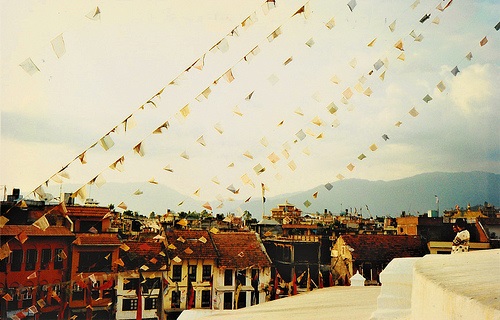
April 26, 2015; New York Times
If readers have been concerned about the responses of governments and donors to the earthquake relief effort in Haiti, they know this past weekend’s events in Nepal constitute a challenge that will test anything and everything we have learned about responding to disasters. Nepal is one of the poorest countries in the world, but also one of the most remote and isolated. The death count as of this New York Times article was 2,400, but everyone knows that that number is likely to grow massively. Reports say that 80 percent of the homes in rural Nepal, which is Nepal outside of Kathmandu, have been destroyed, and that means that those displaced people are now exposed to the vulnerability of living in the cold mounts of the Himalayas without shelter and other resources. The first earthquake, rated at 7.9 on the Richter scale, has been followed by aftershocks of over 6.7, which would be considered major quakes in other places in the world. Moreover, these earthquakes were shallow, meaning that their damage was appreciably worse than deeper earthquakes.
Nepal was already a place where international NGOs were in operation responding to the deprivations of Nepalese, but now they are compelled to move into disaster relief. However, as Sanjay Karki, the country director for Mercy Corps, an international aid organization, noted, members of his own staff had lost their homes and others were camping in the streets waiting for the aftershocks to subside. Some members of his staff had lost their homes, and although his own house was still standing, his extended family in Kathmandu was camping outside until the aftershocks subsided. With the aftershocks, Karki said, “We really don’t know what to expect so everyone is in a state of panic.”
Sign up for our free newsletters
Subscribe to NPQ's newsletters to have our top stories delivered directly to your inbox.
By signing up, you agree to our privacy policy and terms of use, and to receive messages from NPQ and our partners.
“We’re just gearing up,” said Roger Hodgson, deputy country director in Nepal for Save the Children. “People have been resilient. But it’s been difficult to get people and supplies into the country, especially to rural areas far from Kathmandu.”
It is a horrendous situation, but will donor countries and donor organizations learn from the lessons of Haiti? Hopefully so, but if so, that means several things:
- Strengthening rather than debilitating Nepalese governance. The Times article noted that the Nepalese government’s response to the earthquake is being coordinated through its national Emergency Operating Center. Will the donors work with the Nepalese government structures, or bypass them as they did so often in the case of Haiti?
- Is the relief going to be timely? Monsoon season is approaching, and displaced people are exposed to the elements. The nation needs timely delivery—as in right now—of plastic sheets, blankets, cooking equipment, hospital supplies, and more, to reach the homeless displaced in densely populated Kathmandu and to get distributed to the far flung rural communities.
- The donors need to do more than just work with the national government. In Haiti, NGOs bypassed local municipal government and local NGOs in the delivery of assistance. Francois Grünewald of Groupe URD reminds everyone that “in the future, the aid system won’t be able to function as an ‘occupying alien’ as it largely did in Port-au-Prince, and instead will have to engage with local people, local authorities and local realities.”
- There is also the issue of NGO accountability in Haiti. An article in The Nation described Haiti as “The Republic of NGOs,” but the NGOs were often outside much of a system of accountability except for their own self-regulation—and we know what self-regulation does and doesn’t do. International bodies, in addition to paying attention to getting resources to Nepal, have to be prepared to do real-time monitoring of NGOs on the ground and hold NGOs accountable.
- The relief response has to be quickly accompanied by attention to rebuilding and redevelopment. Nepal was already desperately poor and is further impoverished. Rebuilding urban Kathmandu and the rest of rural Nepal cannot be a matter of returning the nation to vulnerability and poverty. Remember, the population of Nepal is without the resources that people in developed countries face during natural disasters. No State Farm or Allstate is going to rebuild the homes of people who lost their shelter the way insurance companies did for (some) residents of Louisiana and Southern Mississippi after Hurricane Katrina or for people in the Rockaways and along the Jersey shore after Superstorm Sandy. They have lost the little that they have. The millions of Nepalese affected by the earthquake need to be helped back beyond where they were.
Philanthropy is very quick to respond to a natural disaster with emergency relief. Will it respond to Nepal over the long term in a way that doesn’t have donors repeating the mistakes of Port-au-Prince in 2010 in Kathmandu in 2015?—Rick Cohen













